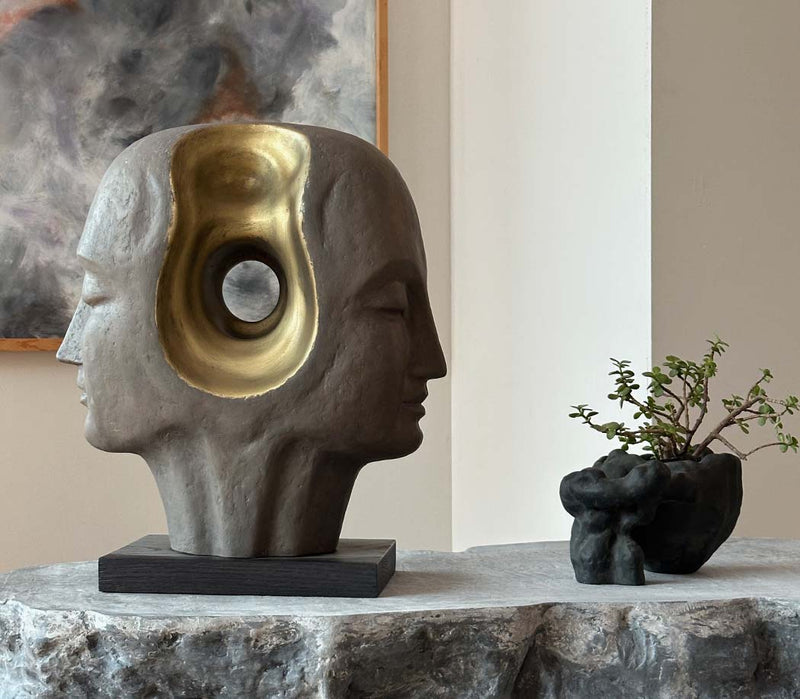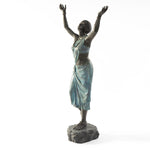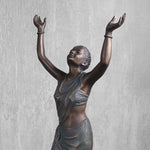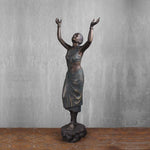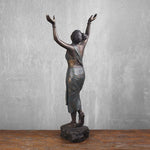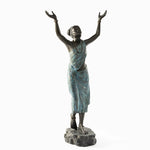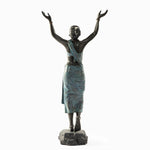Lalit Marmik - The Voice of Inner Spirit
The mention of Pa'rvati is warranted with the mention of Shiva. Pa'vati or Gauri Pa'vati (the fair daughter of the mountains) was the daughter of the Aryan king in the Himalayan region. She performed penance to be the consort of her beloved, her object of adoration Shiva. She eventually married Shiva and the couple came to be known as the first "married couple" bound by duties and responsibilities towards family life and social life. This concept of marriage in the then libertine and brute humans formed the foundation of a developing human society, where males and females share responsibilities towards each other and towards their progeny.Pa'rvati is considered an ideal consort. Together with Shiva her contributions to the human society is regarded to be tremendous. Her questions (compiled as nigama) and Shiva's answers (compiled as a'gama) form the two wings of tantra. While Tandava dance was invented by Shiva, his consort Parvati, had invented ‘lalita mármika’ which means “voice of the inner spirit”. It is gentle dance with graceful movements. This dance arouses the deepest feelings of love and devotion. In fact there are many instances where the dancer has experienced samadhi, a deep state wherein the mind is absorbed in a state of complete oneness. A great Indian saint of the 15th century, Caetanya Prabhu, experienced so many kinds of samadhis through this dance, along with Hari Kiirtan. He immortalized kiirtan and gave it status in the spiritual field. This dance dissolves egotism, and prepares the mind for meditation.Tandava and lalita marmika could be considered to be on opposite sides of the spectrum. While creating a link and adjustment between the two, rhythms were invented, the common term for which is tála: the tá of táńd́ava and the la of lalita. These formed the basis of “Indo-Aryan” music, which exist as two schools, the Áryávarta School and the Dákśinátya School. The common name for the Áryávarta School is Hindustani Sangeet, and that for the Dákśinátya School is Karnatik Sangeet.While Tandava was invented by Shiva, his consort Parvati, had invented ‘lalita mármika’ which means “voice of the inner spirit”. It is gentle dance with graceful movements. Tandava and lalita marmika could be considered to be on opposite sides of the spectrum. While creating a link and adjustment between the two, rhythms were invented, the common term for which is tála: the tá of táńd́ava and the la of lalita. These formed the basis of “Indo-Aryan” music, which exist as two schools, the Áryávarta School and the Dákśinátya School. The common name for the Áryávarta School is Hindustani Sangeet, and that for the Dákśinátya School is Karnatik Sangeet.
Thoughtfully designed and handcrafted in India using premium stone composite. Each piece is unique, reflecting the individual touch of the artisan. Natural variations and surface imperfections are inherent to the handmade process and highlight its authenticity.
Finish : Green Patinated Bronze Finish
Dimension : 25.75" (Height) x 12.75" (Width) x 06.00" (Depth)
Studio Renaissance objects/sculptures need proper care to maintain their beauty, prevent damage, and ensure longevity. Follow these guidelines for the best upkeep.
Cleaning & Maintenance
- Use a soft, dry microfiber cloth or a feather duster to remove dust and dirt.
- If needed, wipe gently with a slightly damp cloth. Avoid rubbing harshly to prevent any damage to the finish.
- Do not use abrasive scrubbers, strong detergents, or chemical-based cleaners, as they may damage the finished surface.
- Avoid prolonged exposure to direct sunlight as it dull and damage damage the finish.
Delivery typically takes 5–10 business days, depending on the product and destination. In the event of any unforeseen delay, we will notify you promptly after your order is placed. If you prefer a refund due to the delay, we will be happy to process it.
